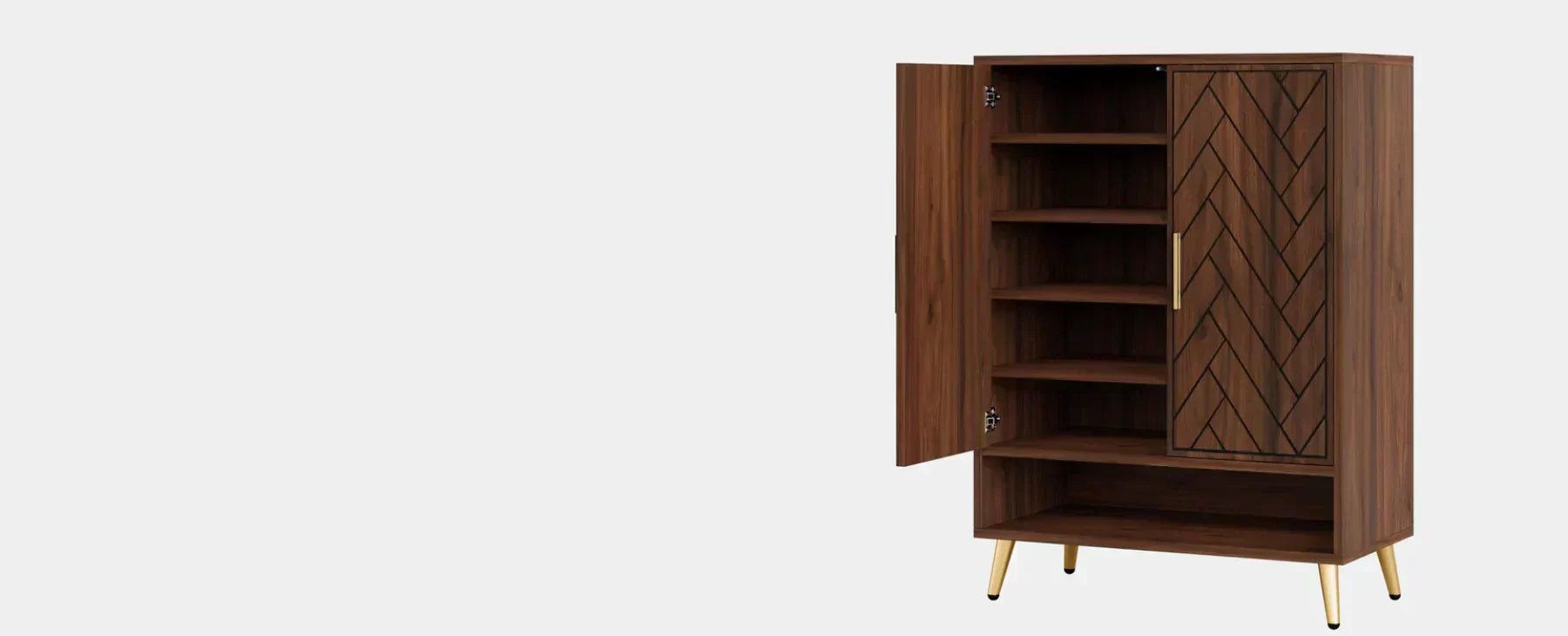When it comes to setting up your TV, the difference between a stand and a wall mount might seem obvious—one sits on a piece of furniture, the other hangs on the wall. But beyond this surface-level contrast, there are key pros and cons that can significantly impact your space, safety, and viewing experience. In this guide, we’ll break down the advantages and drawbacks of each setup to help you decide which option is the best fit for your home.
Table of Contents
What is a TV Stand?
A TV stand (media stand)is a piece of furniture designed to hold your television and often includes shelves or cabinets for media players, game consoles, and decor. It’s a common setup in living rooms and bedrooms because it’s easy to install and doesn’t require any wall modifications.

Pros
- No installation hassle: Just unbox, set it in place, and your TV is ready to go—no drills, no wall anchors.
- Extra storage: Most TV stands come with drawers, shelves, or cabinets, making them ideal for storing remotes, game systems, or even movies.
- Easy to move: Want to rearrange your living room? A TV stand gives you that flexibility without patching up holes in the wall.
- Great for renters: Since you’re not altering the wall, it’s perfect for apartments or rentals where mounting isn’t an option.
Cons
- Takes up floor space: In smaller rooms, a stand can make the space feel more cramped.
- Less secure: Kids or pets can easily bump into the stand, making it a potential tipping hazard if not anchored.
- Lower viewing angle: Depending on the height of the stand, your TV might sit lower than ideal for eye-level viewing, especially if you're on a couch.
What is a Wall Mount?
A wall mount attaches your TV directly to the wall, creating a clean, streamlined look. It's a go-to option for modern setups, especially when space-saving or a minimalist aesthetic is a priority.

Pros
- Saves space: Wall mounting frees up floor space and makes your room feel larger and less cluttered.
- Modern, sleek design: Your TV becomes part of the wall, like art—it’s clean, elegant, and tech-forward.
- Customized height: You can mount your TV at the perfect eye level for comfortable viewing, especially in a home theater setup.
- Less risk of tipping: With the TV securely mounted, it’s out of reach of children or pets.
Cons
- Permanent installation: Drilling into walls means extra work, especially if you live in a rental or aren’t comfortable with DIY tasks.
- Limited flexibility: Once it’s on the wall, you can’t easily reposition your TV or move it to another room.
- Cable management required: Without proper planning, visible cords can ruin the clean look you’re going for.
Which One is Better For You?
Choosing between a TV stand and a wall mount isn’t just about looks—it comes down to how you live and what your space allows. Let’s walk through the key factors to help you make the smartest choice for your setup.
Room Size and Layout
If you have a compact living space or a small apartment, wall mounting is a great way to free up valuable floor area. It keeps things feeling open and uncluttered. On the other hand, in a spacious room, a stylish TV stand can add balance and even serve as a design anchor.
Type of Wall
Not all walls are mount-friendly. Drywall may require additional reinforcement, and brick or concrete can be tough to drill into. If you’re not sure about your wall type—or you’re renting—a stand is often the safer and simpler choice.
Viewing Height and Angles
Wall mounts give you the freedom to position your TV at the perfect eye level, which can enhance your viewing experience and reduce neck strain. With a TV stand, you're limited to the height of the furniture, which might not align perfectly with your seating.

Safety (Especially with Kids or Pets)
Wall-mounted TVs are harder for little hands or playful pets to reach, making them a safer choice for families. While many TV stands now come with anti-tip straps, wall mounting still offers better peace of mind in high-traffic households.
Aesthetic Preferences and Decor
Want a sleek, modern look? Wall mounts blend right in with minimalist or contemporary interiors. Prefer a cozy, traditional feel? A wooden TV stand with storage adds warmth and character to your space.
Budget and Installation Complexity
TV stands usually cost more up front, especially if you want one with built-in storage, but they don’t require any tools or labor. Wall mounts are often cheaper but may need professional installation, especially if you want the wires hidden.
FAQ
When Should You Use a TV Stand?
- You’re in a rental and can’t drill into walls
- You need extra storage for devices, games, or décor
- You want the flexibility to move or rearrange furniture
- You prefer a more traditional or grounded room layout
When Should You Use a Wall Mount?
- You have limited floor space and want a clean, open look
- You want to keep your TV out of reach of kids or pets
- You’re aiming for a modern or minimalist aesthetic
- You care about achieving the perfect viewing height
Can I still use a TV stand if I wall-mount my TV?
Absolutely. Many homeowners use a low-profile media console or TV stand beneath a wall-mounted TV to add storage, enhance decor, and hide cables. It’s a popular and practical combo.
Final Verdict
TV stands and wall mounts each have their own advantages, and the best choice depends on your space, lifestyle, and personal taste. Still deciding between a TV stand or a wall mount? Explore our selection of media units & TV stands, designed to match any style and space. Whether you're placing your TV or just storing your stuff, we've got the perfect setup for you.
Read more:
9 Furniture Alternatives for TV Stands
TV Stand Height & Size Guide (2025 Chart)



